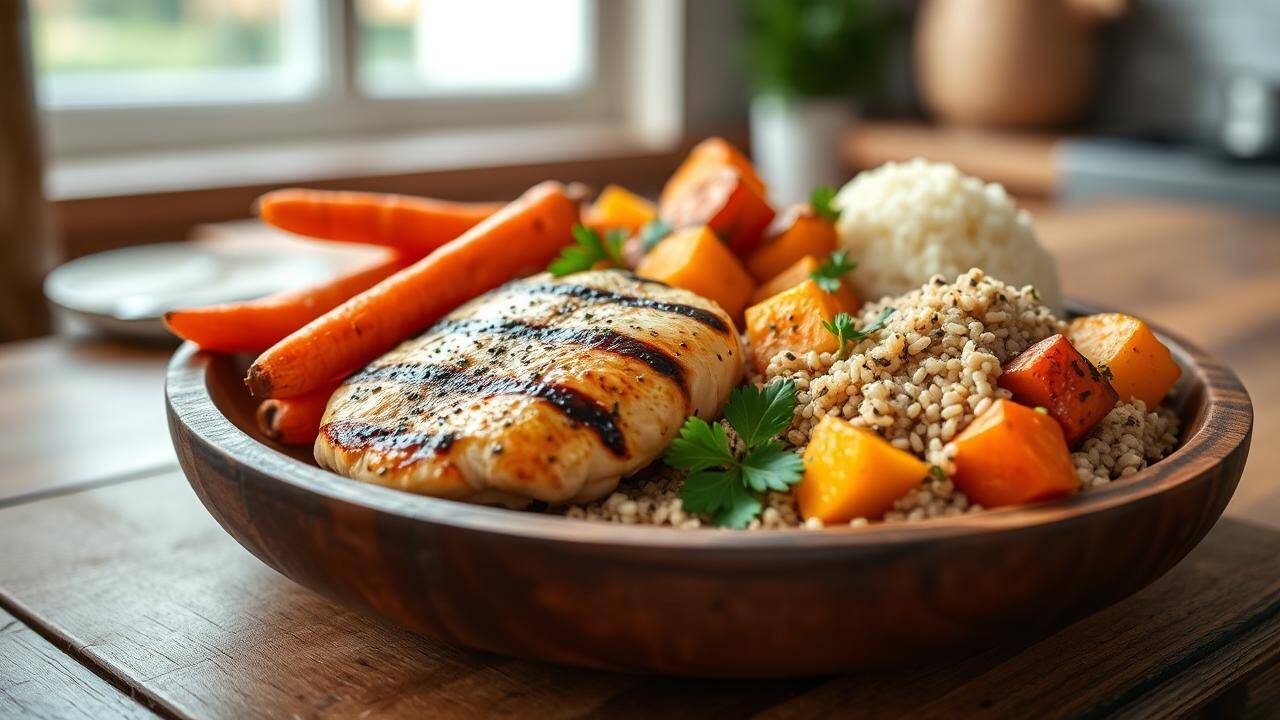Is Chicken Vegetarian? Why the Right Term Matters (and What to Say on Menus)
If you don’t eat dairy, red meat or fish but you do eat chicken, you’re not a vegetarian. The most accurate, widely understood label is pollotarian (sometimes called pollo‑vegetarian). Because you also avoid dairy, you can describe it more precisely as a dairy‑free pollotarian diet . Standard definitions of vegetarian diets exclude all meat—chicken included—so calling this pattern “vegetarian” creates confusion.
Communicate clearly with hosts, caterers, and coworkers.
Find recipes and grocery items that fit your needs without constant back‑and‑forth.
Because you also avoid dairy, add that qualifier when you describe your pattern (e.g., “dairy‑free pollotarian”). That instantly signals “no butter, yogurt, or cheese,” which matters in sauces, breads, and sides.
Flexitarian/semi‑vegetarian: mostly plant‑based with occasional meat.
Pollotarian: poultry is the only meat; fish and red meat are excluded. Your version is pollotarian without dairy.
Vitamin B12: Covered by poultry; fortified foods add a cushion.
Calcium & vitamin D (no dairy): Use fortified plant milks, calcium‑set tofu, tahini, almonds, leafy greens; consider vitamin‑D‑fortified foods or supplements as needed.
Omega‑3s (EPA/DHA): With fish off the table, focus on ALA sources (flax, chia, walnuts) and consider an algal DHA supplement if desired.
Snack: Apple with almond butter.
Dinner: Herb‑roasted chicken thigh; tray‑baked carrots and broccoli; buckwheat or farro; drizzle of olive oil and lemon.
Optional dessert: Baked pear with cinnamon and crushed walnuts.
Socially flexible for families where others still eat meat.
Easy protein planning from poultry plus legumes and grains.
Watch‑outs
The term “pollo‑vegetarian” can mislead people—“pollotarian (dairy‑free)” is clearer.
If you eat chicken but avoid dairy, red meat, and fish, the accurate term is pollotarian—more precisely, a dairy‑free pollotarian. It isn’t vegetarian by standard definitions, and using the right label helps you communicate clearly and plan a balanced, enjoyable, plant‑rich plate.

Why it isn’t “vegetarian” (and why that matters)
Vegetarian diets exclude meat, poultry, and fish. That’s the convention used by dietitians, restaurants, and recipe writers. Using the right term helps you:- Order correctly at restaurants (no fish sauce, chicken broth, or “just a little cheese”).
So what is the right label?
The clearest term is pollotarian—a person whose only meat is poultry (e.g., chicken, turkey, duck) while avoiding red meat and seafood. Many people also use pollo‑vegetarian, but since it still includes meat, “pollotarian” or “poultry‑only diet” tends to be less confusing.Because you also avoid dairy, add that qualifier when you describe your pattern (e.g., “dairy‑free pollotarian”). That instantly signals “no butter, yogurt, or cheese,” which matters in sauces, breads, and sides.
Where it sits on the diet spectrum (quick comparisons)
- Vegan: no animal‑sourced foods at all.
- Vegetarian: no meat, poultry, or fish; some versions include eggs and/or dairy.
- Pescatarian: eats fish/seafood but not poultry or red meat.
Nutrition snapshot for a dairy‑free pollotarian
A poultry‑only, dairy‑free pattern can be well‑balanced with a little planning:- Protein: Poultry, legumes, tofu/tempeh, lentil or chickpea pasta, nuts and seeds.
- Iron & zinc: Dark‑meat chicken and turkey provide heme iron and zinc; pair plant sources (beans, pumpkin seeds) with vitamin‑C‑rich veg to boost absorption.
Sample 1‑day dairy‑free pollotarian menu (balanced & practical)
- Breakfast: Oatmeal made with fortified soy or oat milk; chia; sliced berries; a teaspoon of tahini for extra calcium.
- Lunch: Big chopped salad (romaine, kale, peppers, cucumber) with quinoa, roasted chickpeas, avocado, and lemon‑tahini dressing.
Pros and caveats
Upsides- Cuts out red and processed meats while keeping meals plant‑forward.
You may also like
- 'Hindus responsible for Bharat': RSS chief Mohan Bhagwat; calls Sangh an 'organised force that doesn't seek power'
- Civil Aviation Minister reviews on-ground situation at Delhi ATC towers after tech glitch
- Uttarakhand CM announces pension hike for Uttarakhand movement activists
- Golf: Pranavi best-placed Indian as Ruixin Liu wins China Championship in Shenzhen
- "Traders, industrialists, engineers....no one was safe in RJD rule": Yogi Adityanath
- Without dairy, be intentional about calcium and vitamin D.
- Without fish, choose strategies for long‑chain omega‑3s (e.g., algal oil or fortified foods).
What to say on a menu or to a host (scripts that work)
- “I’m pollotarian and dairy‑free—I eat chicken and turkey but not fish, beef, or dairy.”
- If eggs are relevant (your question didn’t specify): “I do/don’t eat eggs.”
Those two sentences prevent most mix‑ups with butter, cheese, broths, and fish sauce.
If you eat chicken but avoid dairy, red meat, and fish, the accurate term is pollotarian—more precisely, a dairy‑free pollotarian. It isn’t vegetarian by standard definitions, and using the right label helps you communicate clearly and plan a balanced, enjoyable, plant‑rich plate.









